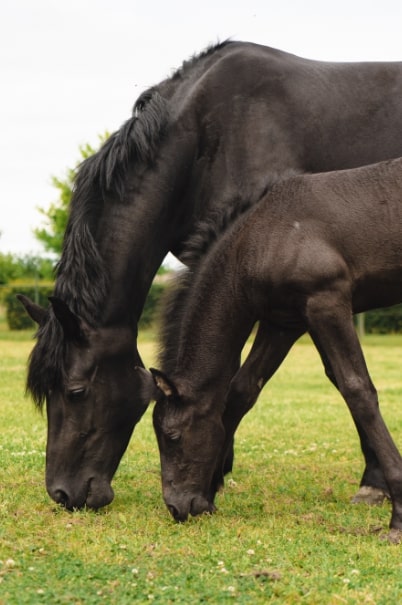Feeding horses during the longer and warmer spring days tends to be different than in the winter period. There are certain diet and feeding considerations you must keep in mind. You may even need to make a change in horse feed. By doing so, you can keep the transition from winter to spring smooth for your horse.
Monitor body conditions
Firstly, you need to monitor your horse’s body condition. Each horse is unique. So, some of them will have acquired winter weight from working less. Others will have lost a few pounds staying warm in the cold. Before even considering changing your horse’s spring-feeding regimen, examine its body condition. With the aid of an equestrienne expert or your veterinarian, determine if your horse is over or under-weight. It may have the right amount of weight.
To monitor the weight of your horse without a scale, you can make use of the body condition scoring strategy. This system will allow you to estimate the fat within the horse’s body. When you have the estimate of the level of fat cover, you can more accurately determine if you should decrease or increase the caloric intake. Every horse will need a separate body condition score that is reliant on multiple factors. These include current or past injuries, breed, level of work, and age.
Concentrates
Next, you can’t forget about concentrates. Countless horses get grain daily. During winter, some need additional portions to preserve their ideal body weight. Others get less because of inactivity.
Altering the amount and type of grain or concentrate your horse eats needs to be done carefully and slowly. A horse’s interior digestive system is built for slow shifts. Knowing this, monitor the horse’s body condition and level of work. If your horse’s work level goes up, they may need more grain. Should work stay the same, and it can safely eat spring grasses, your horse may need fewer concentrates.
No matter the adjustments made, ensure your horse is still getting the right level of important nutrients. This includes minerals, vitamins, and amino acids. Achieving this could call for a change in feed. Horses needing extra calories can be bumped up to a greater calorie performance horse feed. Those needing fewer calories can go down to a ration balancer product.
Forage
You should also know that horses eat a fair amount of forage. This isn’t really a secret. However, something most don’t know is that a it is only as good as the fibre inside. Pastures tend to be dormant in winter. This can minimise a horse’s natural grass intake. Consequently, many owners will feed their animals more forage through beet pulp or hay. Such a feeding tactic can work in the cold, but you must re-evaluate it in spring.
During spring, the majority of pasture paddocks will have new grasses rich in sugar. Examine your horse’s body condition score as it starts to eat the rich green grasses. Horses gorging themselves on them can experience major health problems. For instance, overweight horses, or ones with Cushing’s disease, laminitis or insulin resistance will need careful monitoring. High starch and sugar levels of spring grass can aggravate some of these problems. In these scenarios, lower turnout time or use a grazing muzzle to aid in restricting intake for specific at-risk horses.
We have plenty of horse feed options
At JS Hubbuck Ltd, we supply several feed products for different needs. They are exactly what you require to keep your animals fit and healthy. You can choose feeds for any time of year, including warmer months like spring and summer and the coldest parts of winter.
So, if you are interested in our horse feed and would like to know more about it, feel free to get in touch. We can provide details, tips, and more.

